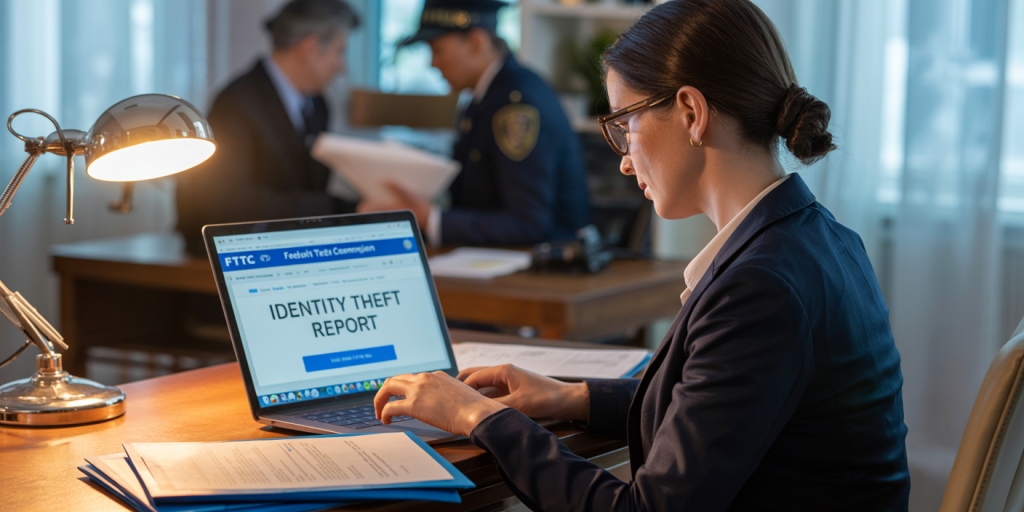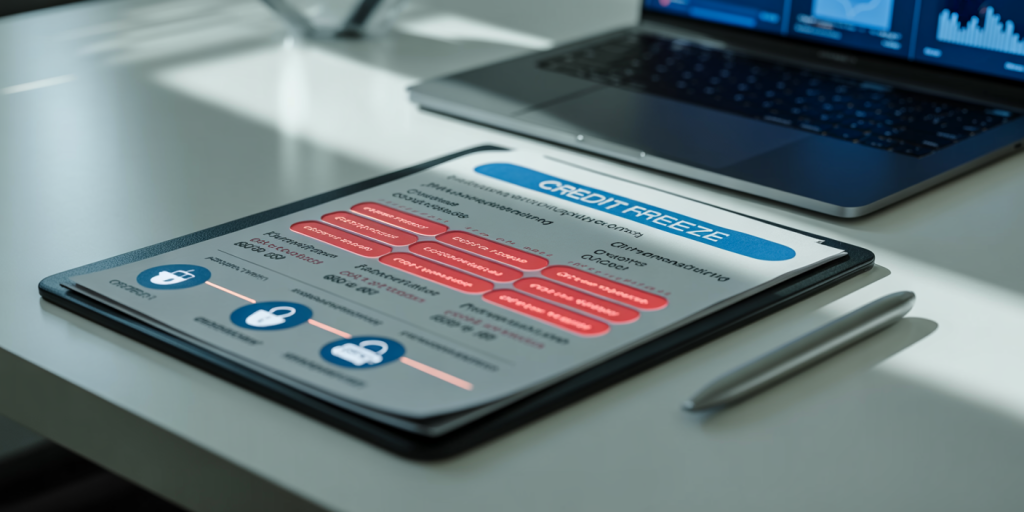What To Do If Your Identity Is Stolen: 72-Hour Emergency Plan
Anúncios
Identity theft is a rapidly growing crime that affects millions of people annually. According to the Federal Trade Commission (FTC), there were over 1.4 million cases of identity theft reported in 2022 alone, marking a significant increase compared to previous years. The immediate aftermath of discovering your identity has been stolen can be overwhelming and confusing. However, acting within the critical first 72 hours can greatly reduce damage, prevent further theft, and increase the likelihood of reclaiming your identity.
This guide offers a practical, hour-by-hour plan to help victims regain control, illustrating each step with real-world examples and backed by current data. By following this structured approach, you can protect your finances, credit, and personal information effectively.
Understanding the Scope of Identity Theft
Anúncios
Identity theft occurs when someone unlawfully obtains personal information to commit fraud or other crimes. Common cases include credit card fraud, medical identity theft, and even tax refund theft. A survey by Javelin Strategy & Research revealed that in 2023 alone, identity thieves stole over $56 billion from U.S. consumers. The impact isn’t just financial; victims often spend weeks or months dealing with the aftermath.
For instance, in 2021, a case in New York involved a group using stolen IDs to open numerous credit accounts, resulting in over $500,000 in fraudulent charges. The victims faced significant stress and financial disruption before resolving the issue.
Anúncios
Understanding how thieves operate can help victims act faster and more decisively. Many attacks begin with phishing emails, data breaches, or physical theft of documents—common channels that require vigilance.
Immediate Actions: Hour 0 to 24 – Stop the Bleeding
The first 24 hours after discovering identity theft are crucial. Your immediate goal is to limit ongoing damage and prevent further unauthorized accounts or transactions.
Step 1: Contact Your Financial Institutions
Begin by calling your banks, credit card companies, and other financial institutions. Inform them about the fraudulent activity and ask them to freeze or close affected accounts. Many banks have specialized fraud departments that can expedite this process. For example, Chase Bank allows customers to freeze their accounts temporarily while investigating suspicious transactions.

Additionally, request new cards and monitor your accounts closely for any new activity. A real-world case from California saw a victim alert their bank within hours, resulting in a fraud hold that stopped an ongoing $15,000 transaction.
Step 2: Place a Fraud Alert on Your Credit Reports
Reach out to one of the three major credit bureaus—Equifax, Experian, or TransUnion—to place a fraud alert. This alert warns creditors to verify your identity before issuing new credit. The FTC advises placing an initial fraud alert, which lasts 90 days, and can be extended if necessary.
By law, once you place an alert with one bureau, they must inform the others. This simple step has prevented countless fraudulent credit accounts from being opened in victim names.
Hour 24 to 48: Formal Reporting and Documentation
Once you have taken steps to limit damage to your accounts, the next phase is to file official reports and create a detailed record of the incident.
Step 3: File a Report with the Federal Trade Commission (FTC)
The FTC plays a vital role in coordinating identity theft recovery. Victims should immediately file a complaint via the FTC IdentityTheft.gov portal. This website provides a personalized recovery plan and a filled Identity Theft Report, which serves as a legal affidavit in many cases.
For example, if someone’s name and Social Security number were stolen to file a false tax return, the FTC report can help resolve the conflict with the IRS.
Step 4: Report to Local Law Enforcement
Filing a police report is essential for creating an official paper trail. Contact your local police department, provide all evidence and documents related to the identity theft, including your FTC Identity Theft Report.

While some victims worry about law enforcement’s involvement, this step can be decisive in resolving disputed charges. For instance, in a 2022 case in Florida, a police report helped a woman recover thousands in fraudulent medical bills.
Hour 48 to 72: Comprehensive Credit and Identity Monitoring
As you move beyond immediate containment, you need to monitor your credit and identity vigilantly to catch any lingering or new fraudulent activities.
Step 5: Obtain Your Credit Reports and Review Carefully
Under the Fair Credit Reporting Act (FCRA), you are entitled to one free credit report annually from each bureau via AnnualCreditReport.com. After identity theft, victims should request these reports immediately, even if you recently obtained them.
Look for unfamiliar accounts, incorrect personal information, or inquiries from companies you do not recognize. Dispute any errors directly with the bureau. The Consumer Financial Protection Bureau (CFPB) notes that disputes can typically be resolved within 30 days.
Step 6: Consider a Credit Freeze and Identity Theft Protection Services
Freezing your credit is a step beyond a fraud alert; it locks your credit file so lenders cannot access it until you lift the freeze. This effectively prevents new credit accounts from being opened. It is free and can be done through the credit bureaus online or by phone.
In addition, many victims opt for identity theft protection services such as LifeLock or IdentityForce. These platforms provide real-time alerts and assistance in recovery. However, comparing services based on features and pricing is important; a table below summarizes key differences:
| Service | Monthly Cost | Identity Monitoring | Credit Freeze Assistance | Recovery Support | Insurance Coverage |
|---|---|---|---|---|---|
| LifeLock | $9.99 – $29.99 | Social media + dark web | Yes | Yes | Up to $1 million |
| IdentityForce | $17.99 – $29.99 | Full credit monitoring | Yes | Yes | Up to $1 million |
| Experian IdentityWorks | $9.99 – $19.99 | Credit bureau specific | Yes | Yes | Up to $1 million |
Choosing the right service depends on your specific risk factors and budget.

Practical Case Study: The Anderson Family Experience
The Anderson family from Ohio encountered identity theft when a hacker gained access to Mrs. Anderson’s email and linked financial accounts. Within 12 hours of noticing unusual transaction alerts, they froze accounts and contacted the banks. By the time 48 hours passed, they had filed reports with the FTC and local police, and had their credit reports in hand.
Their proactive actions limited the fraud loss to $2,000, whereas their neighbors, who delayed reporting, faced over $20,000 in fraudulent charges. The Andersons also subscribed to a monitoring service for long-term protection, illustrating the benefits of swift and organized responses.
Long-Term Recovery and Prevention
While your first 72 hours focus on immediate damage control, recovering fully requires ongoing vigilance and prevention strategies.
Victims often spend months resolving disputes, reinstating credit, and repairing reputations. The Identity Theft Resource Center (ITRC) estimates that full recovery can take from several months to years depending on the case complexity. This underscores why early action mitigates long-term harm.
Adopting strong cybersecurity habits is imperative. Steps include enabling two-factor authentication on sensitive accounts, shredding physical documents containing personal data, and reviewing credit reports quarterly.
Future Perspectives: The Evolving Landscape of Identity Protection
As technology advances, so do identity theft methods and preventative tools. The rise of artificial intelligence-driven fraud detection offers promise for faster breach detection and consumer alerts.
Emerging digital identities based on blockchain technology propose new models of secure, user-controlled identity verification, reducing risks associated with centralized databases. Governments and financial institutions are increasingly investing in these innovations.
On the regulatory side, new laws like the 2023 Consumer Data Protection Act aim to strengthen consumer rights and enforce stricter data security requirements on companies. Continued awareness, education, and proactive measures remain the best defense individuals can adopt.
By understanding how threats evolve and committing to rapid action within the critical 72-hour window, individuals can protect themselves effectively against one of today’s most pervasive cybercrimes.



Post Comment